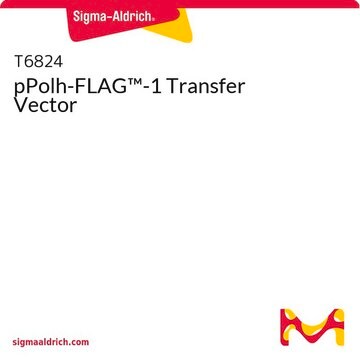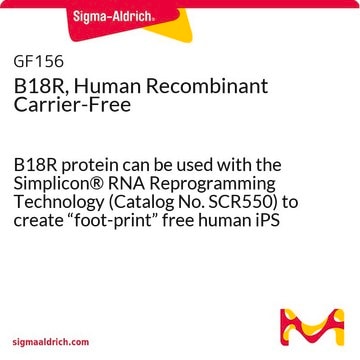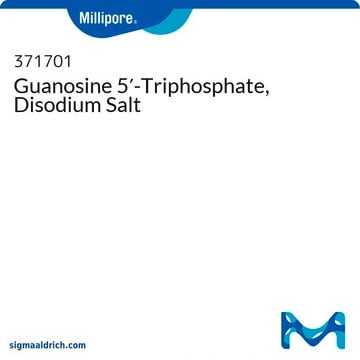SCR724
Simplicon Cloning Vector (E3L)
for expression of the target gene(s) in transfected cells without the risk of genome integration
Synonym(s):
Cloning Vector, Cloning Vector E3L, Simplicon Vector
About This Item
Recommended Products
technique(s)
nucleic acid detection: suitable (RNA)
shipped in
ambient
General description
Introduction and replication of the Simplicon RNA is expected to elicit a strong interferon response in transfected cells. To suppress the IFN responses, a Vaccinia virus protein5, B18R, is used for the original Simplicon technology. Recently, we found that another Vaccinia virus protein5, E3L, also suppresses the IFN responses in Simplicon RNA expression. B18R neutralizes type I interferons by direct binding, while E3L inhibits the cytoplasmic signaling pathways of IFN responses. Therefore, B18R and E3L are both employed in the Simplicon Expression System and work collaboratively to suppress IFN responses. As a result, there is increased cell viability during RNA transfection and increased expression of the transgenes. The Simplicon Expression System works in human cells and is not expected to work in mouse cells. This is because the B18R does not effectively neutralize mouse interferon (IFN)-β.
One day after transfection of the Simplicon RNA, a spike in the levels of transgenes can be observed. The expression levels are maintained by addition of B18R, E3L and the selective agent, puromycin throughout the duration of the experiment. Over time, expression levels are expected to diminish and stabilize to 1/5 – 1/10 the levels initially observed and may be close to physiological levels after one week. Expression levels and duration may change depending upon the cell types, transgenes and media conditions used. The Simplicon technology has been successfully utilized for efficient human iPSC generation through the sustained expression of critical reprogramming factors3,4 and in the creation of cell lines that express and retain the metabolic activities of five cytochrome P450 enzymes6.
In the Simplicon Expression System, B18R and E3L are provided as a B18R-E3L RNA (Cat. No. SCR722) for the suppression of IFN responses at RNA transfection. For sustained transgene expression, recombinant B18R protein (Cat. No. SCR156 and SCR197) or B18R conditioned medium (B18R-CM) can be used. E3L is continuously provided from the Simplicon RNA itself. B18R-CM can be produced from B18R-E3L RNA or B18R RNA synthesized using the B18R-E3L plasmid (Cat. No. SCR727) or B18R plasmid (Cat. No. SCR728), respectively.
The Simplicon Cloning Vector (E3L) (Cat. No. SCR724) is designed for expression of the transgenes of interest as a Simplicon RNA. The vector encodes four non-structural replication complex proteins (nsPs) as a single ORF at the 5’ half of the RNA, and multiple cloning site, E3L and puromycin resistance gene at the 3’ half of the RNA. Simplicon Cloning Vector (E3L) can accommodate transgene cassettes up to a total size of 8,300 bp. The presence of E3L in the Simplicon RNA works to suppress the IFN responses for sustained expression of the Simplicon RNA. For suppression of IFN responses at RNA transfection, we recommend B18R-E3L RNA (SCR722) prepared from the B18R-E3L plasmid (SCR727).
Storage and Stability
Other Notes
Disclaimer
Storage Class Code
12 - Non Combustible Liquids
Regulatory Listings
Regulatory Listings are mainly provided for chemical products. Only limited information can be provided here for non-chemical products. No entry means none of the components are listed. It is the user’s obligation to ensure the safe and legal use of the product.
JAN Code
SCR724:
Certificates of Analysis (COA)
Search for Certificates of Analysis (COA) by entering the products Lot/Batch Number. Lot and Batch Numbers can be found on a product’s label following the words ‘Lot’ or ‘Batch’.
Already Own This Product?
Find documentation for the products that you have recently purchased in the Document Library.
Our team of scientists has experience in all areas of research including Life Science, Material Science, Chemical Synthesis, Chromatography, Analytical and many others.
Contact Technical Service








